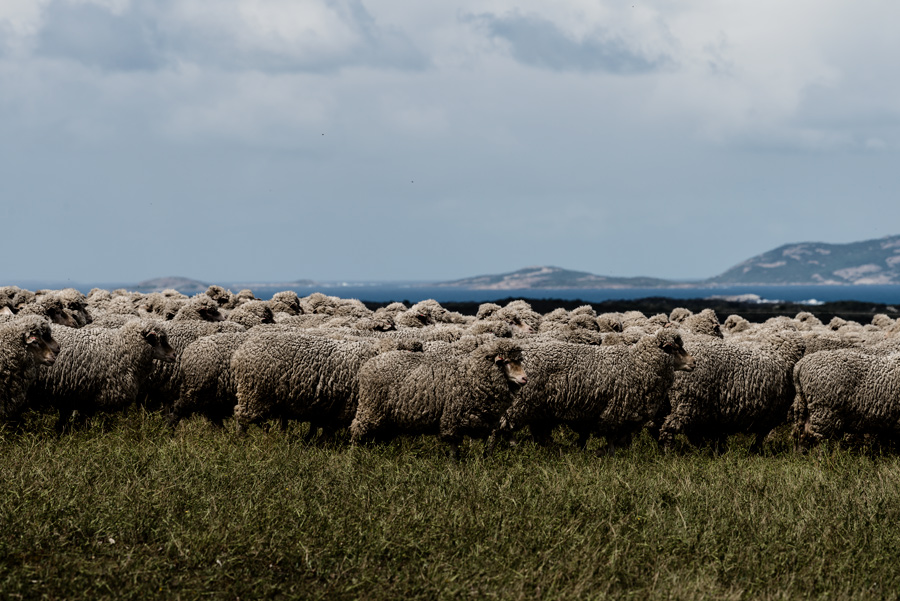Join us in leading the transformation of flystrike management to support a more resilient wool industry.
What is the opportunity?
There is a need to develop an alternative solution to flystrike prevention. At present, a handful of registered products are available for use to prevent the onset of flystrike. Long-term use and reliance on these treatments alone can lead to resistance in blowfly populations. Therefore, it is essential to develop alternative solutions that help woolgrowers mitigate the risk of flystrike, support their transition efforts away from mulesing, and ensure thriving flocks. AWI and its research partners are investing in a range of new technologies and natural formulations to provide innovative flystrike prevention and treatment approaches. They aim to target the blowfly and minimise the risk of flystrike in sheep, with low residues and reduced environmental impacts.
What is the project solution?
Australian Wool Innovation (AWI) is leading cutting-edge research to develop innovative, sustainable solutions for blowfly control, helping to protect sheep welfare and enhance the resilience of the Australian wool industry. Our comprehensive research portfolio spans multiple approaches, including:
- Breeding for Natural Resistance: Harnessing genetics and genomics to breed sheep with enhanced natural resistance to flystrike.
- Sterile Insect Technique (SIT): Trialling SIT to reduce blowfly populations through the release of sterile insects, thereby lowering breeding success.
- Biological Fly Traps: Developing advanced fly traps that use natural attractants to effectively capture blowflies.
- Natural Low-Residue Treatments: Innovating low-residue flystrike treatments that combine nanotechnology with tea tree oil, delivering prolonged protection with minimal environmental impact and off-target effects.
- Wolbachia Bacteria Application: Investigating the use of Wolbachia bacteria to naturally suppress blowfly populations.
- Flystrike Vaccine Development: Pioneering the development of a flystrike vaccine, with the potential to transform prevention strategies and reduce reliance on chemicals and invasive husbandry practices.
- Fly Genomics and RNA Interference (RNAi): Exploring the use of fly genomics and RNAi technologies to selectively target and silence key genes within blowfly populations, ensuring effective control while safeguarding beneficial and non-target organisms.
Collectively, these projects seek to develop alternative approaches to flystrike control, that support woolgrowers transition efforts away from mulesing, reduce environmental impact and ensure thriving flocks.
What is the investment ask?
We invite forward-thinking partners to engage with us to explore how targeted investment, and collaboration can accelerate these innovations and contribute to the future of sustainable flystrike prevention.

What are the benefits of involvement?
Demonstrate Action
Participating in research that promotes thriving flocks demonstrates your ethical responsibility through meaningful action.
Collaboration
Directly collaborating with woolgrowers, researchers and industry allows you to tell authentic stories that resonate with conscious consumers and promote your role in delivering genuine solutions.
Promotion
You will be actively contributing to solving systemic issues in the industry, enhancing your recognition and reputation as a thought leader and innovator, with your contribution actively promoted through Woolmark and wider industry communications.
What is your expected participation?
Partners are invited to engage with the project through several avenues, including:
- Project Advisory Group Membership – Participate in strategic discussions and receive regular updates from the research team.
- Public Relations and Communications – Benefit from PR opportunities throughout the project and access to professionally developed communication materials.
- Access to Project Members – Collaborate directly with participating researchers and woolgrowers for project video production and content development opportunities.
Who are the research partners?
This multiapproach research will be facilitated by AWI and undertaken by several research organisations such as The University of Melbourne, University of Queensland and CSIRO.
How to get involved?
Schedule an initial meeting today to review project plans and understand the impact of your investment.
Please contact: Carolina Diaz - Program Manager, Animal Well-being & Industry Resilience - Australian Wool Innovation carolina.diaz@wool.com